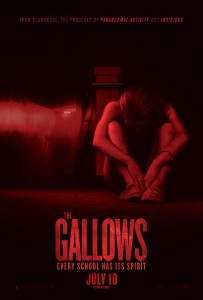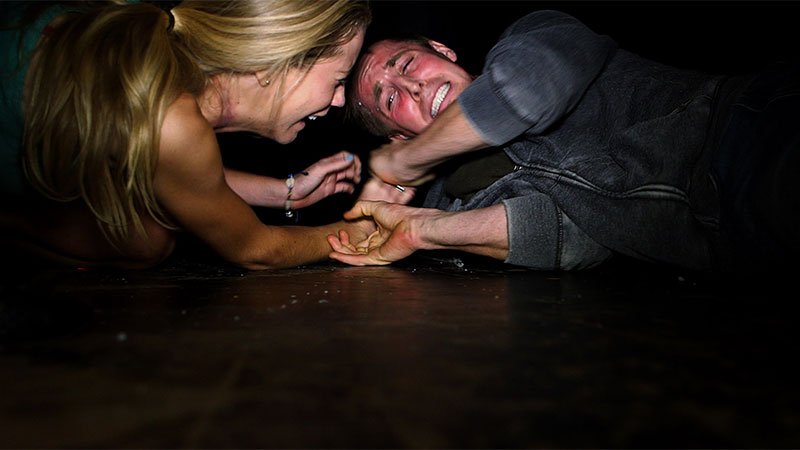Twenty years after an accident caused the death of the lead actor during a high school play, students at the same small town school resurrect the failed stage production in a misguided attempt to honor the anniversary of the tragedy—but ultimately find out that some things are better left alone.

In addition to handling several of the behind-the-scenes jobs themselves, both directors Chris Lofing and Travis Cluff appear briefly on screen.
Written, directed and produced by Chris Lofing and Travis Cluff and shot entirely outside of the Hollywood system, the horror film “The Gallows” found its way to the big screen thanks to the filmmakers’ use of a much smaller one—the computer—and their own ingenuity.
Lofing states, “Travis came up with the initial concept, and we developed it from there until we had a rough script. Then we shot a promo trailer, mainly just so we could see how it worked, if it looked scary to us.”
While the filmmakers continued into production, they put the trailer online. It was spotted by producer Dean Schnider of Film 360, the production arm of Management 360. 360 shared it with well-known genre production company Blumhouse, founded by veteran producer Jason Blum. Blum offers, “‘The Gallows’ is really the first movie we’ve done since ‘Paranormal Activity‘ that has the same DNA—that homemade ‘I can do that’ look, which, to be honest, few people really can do.”
With Blumhouse and Entertainment 360 on board to co-produce and co-finance, the directors—who also served as editors as well as handling the visual effects—were able to finalize the film.
To help induce a real sense of fear in their cast members that would translate into their performances, Cluff and Lofing cast actors out of Los Angeles who knew nothing of the Fresno, California, locations where they’d be shooting, many of which are said to be haunted. Additionally, the directors only revealed the script to the talent little by little over the course of production, and also shared photos, newspaper articles and websites with them that referenced the story of Charlie Grimille and related incidents that had happened subsequent to his death.
To keep things feeling even more genuine for the cast, the filmmakers used the lead actors’ first names as character names. Thus, Reese Mishler plays Reese Houser, Pfeifer Brown plays Pfeifer Ross, Cassidy Gifford plays Cassidy Spilker and, retaining both his first and last names, Ryan Shoos plays Ryan Shoos.
Certain exteriors were accomplished in Lofing’s hometown of Beatrice, Nebraska, the setting for the film. However, “The Gallows” was shot primarily in and around Fresno, California. Utilizing Veteran‘s Memorial Auditorium as the main setting for the story, the filmmakers shot night-for-night, adding to the realism for both the cast and, ultimately, moviegoers. “Night-for-night interiors are rare,” Blum observes, “but it was done to give the actors the true feeling of, well, being out in the middle of the night, just like their characters.”
One of Cluff’s favorite scenes—coincidentally shot on a Friday the 13th, on the thirteenth day of principal photography—also maintained an air of realism for most of those involved. “No kidding, it was the thirteenth day, on a Friday the 13th, and we were hanging someone.” That scene, which actually opens the film, has the look of having been shot on a home video camera. The bulk of the movie, however, takes place 20 years later and is meant to be seen mainly through the lens of today’s ever-present video camera: the cell phone.
The filmmakers employed a variety of cameras at various grades, including a Canon C300, the Panasonic Lumix GH2, RED and Sony. “I think we used just about every camera in the book,” Cluff jokes.

